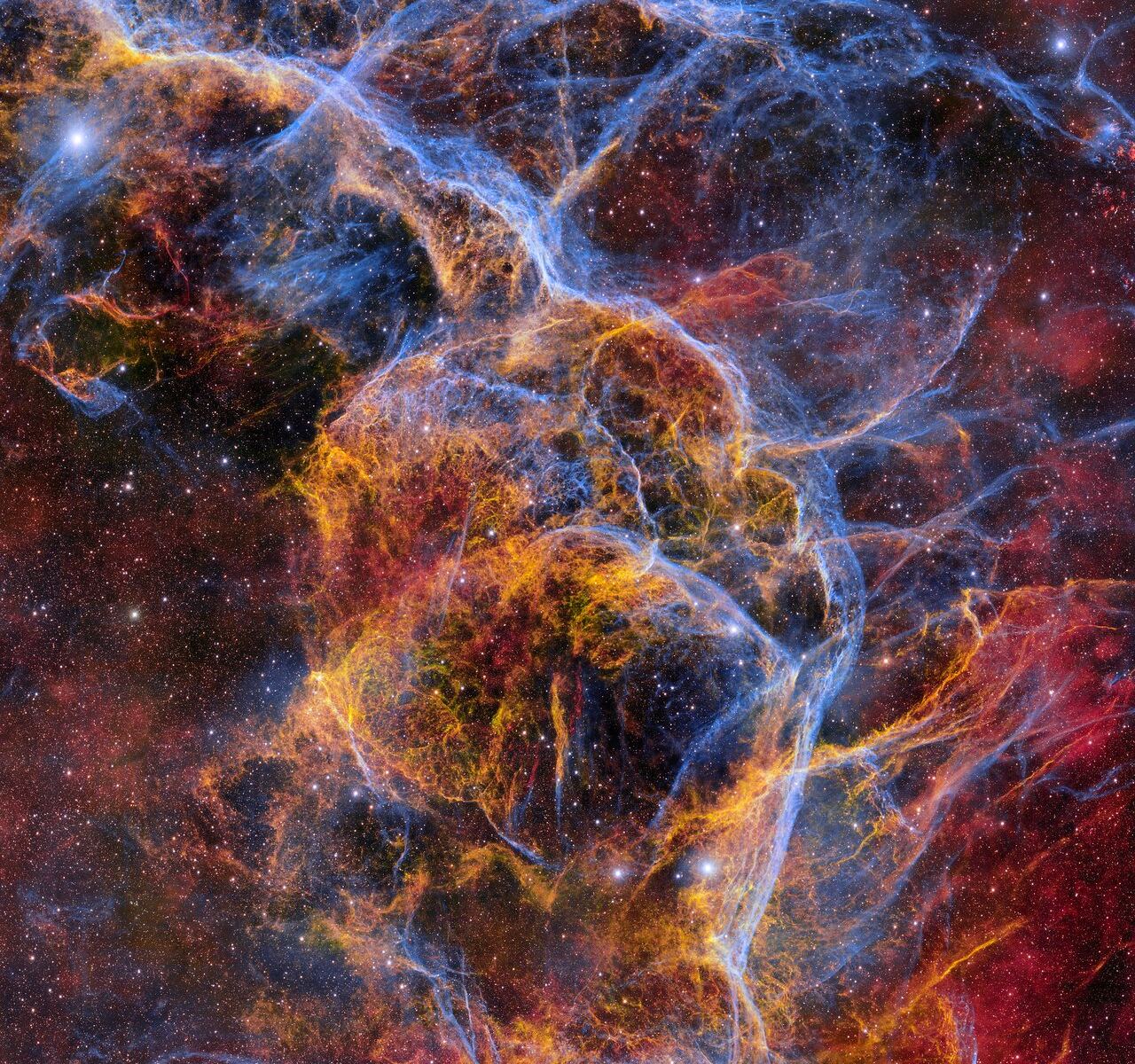Stars more massive than the Sun blow themselves to pieces at the end of their life. Usually leaving behind either a black hole, neutron star or pulsar they also scatter heavy elements across their host galaxy. One such star went supernova nearly 11,000 years ago creating the Vela Supernova Remnant. The resultant expanding cloud of debris covers almost 100 light years and would be twenty times the diameter of the full Moon. Astronomers have recently imaged the remnant with a 570 megapixel Dark Energy Camera (DECam) creating a stunning 1.3 gigapixel image.
The Vela supernova remnant is visible in long exposure photographs in the constellation Vela. It is the result of a star more massive than the Sun reaching the end of its life. As the progenitor star evolved the fusion deep in its core ceased. The lack of fusion means the cessation of the outward pushing thermonuclear force, the star instantly implodes under the immense force of gravity. The inward rushing material rebounds leading to the supernova explosions we see. The shockwave from the event is still travelling through the surrounding gas cloud thousands of years later.
The image recently released is one of the largest images ever taken of the object with the DECam camera. The instrument, built by the Department of Energy, was mounted upon the 4 metre Victor M Blanco telescope in Chile. It reveals amazing levels of detail with red, yellow and blue tendrils of gas. The image was taken through three colour filters in a technique familiar to amateur astronomers. The filters capture specific wavelengths of light and are then stacked on top of each other during processing to reveal the stunning high resolution colour image.

Supernova explosions of this type take hundreds of thousands of years for the effects to dissipate however the core of the collapsed star does remain. As the star collapses, the core is compressed leaving an ultra dense sphere of neutrons, the result of protons and electrons having been forced together under extreme pressures. The Vela Pulsar is only a few kilometres across but contains as much mass as the Sun. The stellar remnant is rotating rapidly, sweeping out a powerful beam of radiation across the Galaxy at a speed of 11 times per second.
Previous images from other instruments highlight the incredible capabilities of DECam. Coupled up to the 4 metre telescope in Chile, it operates like a conventional camera. Light enters the telescope and is redirected back up the tube by the large mirror. The light passes into DECam, through a 1 metre corrective lens and then arrives at its final destination, a grid of 62 charge-coupled devices. These little sensor generate current dependent on the amount of light that falls upon them. With an array of these sensors (570 million of them to be exact), a high resolution image can be recreated!
Source : Ghostly Stellar Tendrils Captured in Largest DECam Image Ever Released

